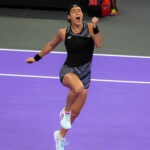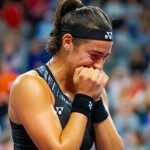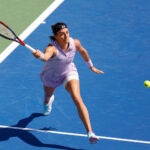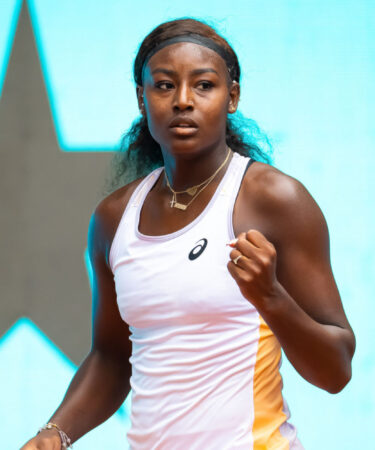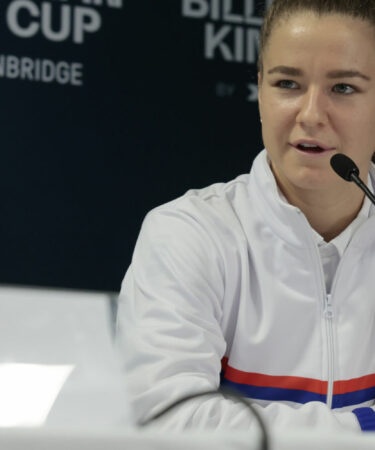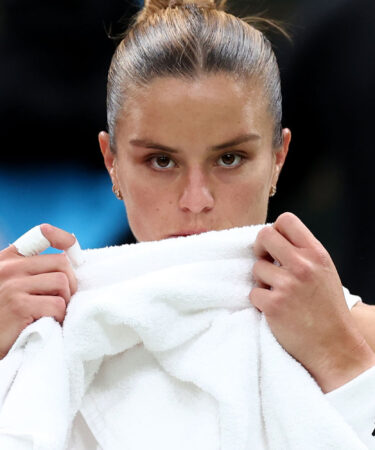Caroline Garcia on her new status : “The feeling is that everything is going so fast that you can’t even think anymore”
The Frenchwoman has high hopes for the 2023 season but is finding it hard not to let her ultra-aggressive game get caught up in tension
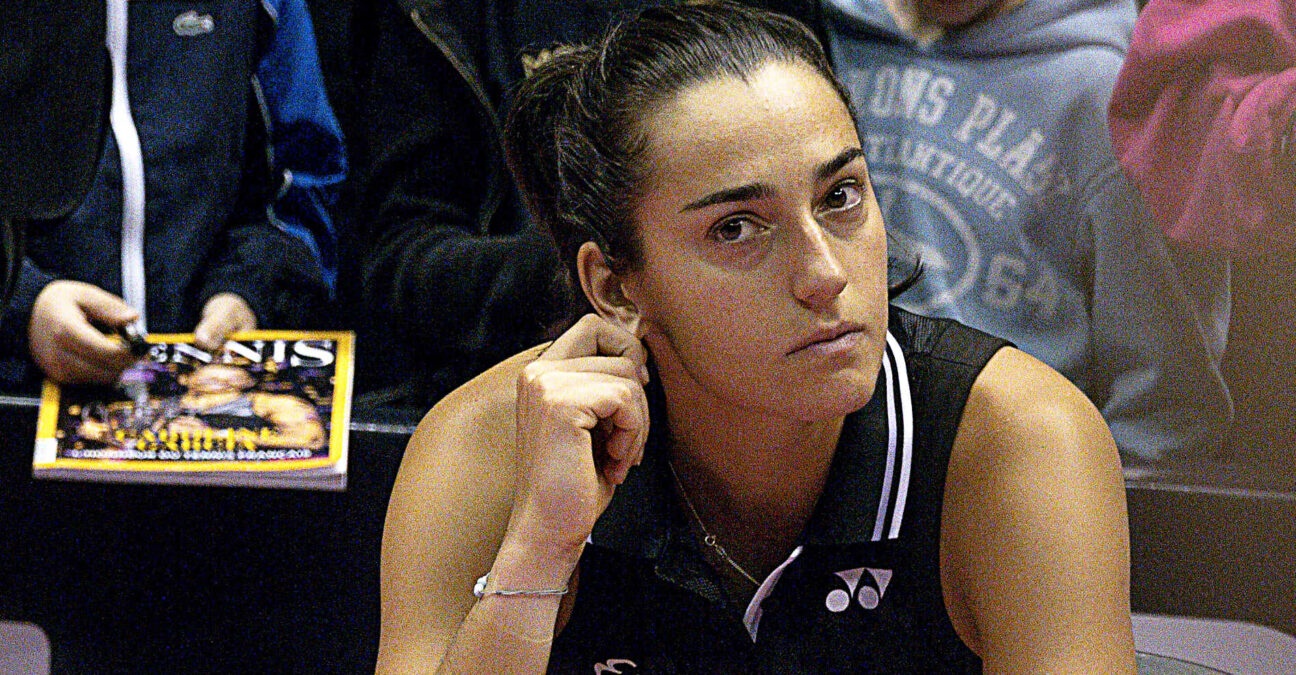 Caroline Garcia Lyon / © Sandrine Thesillat, Panoramic
Caroline Garcia Lyon / © Sandrine Thesillat, Panoramic
Any self-respecting champion has to take special care of their relationship with pressure. That’s nothing new under the sun. Some have even managed to learn to savour it, to think: “pressure is a privilege”. But when you listen to Caroline Garcia at the start of the 2023 season, you are forced to realise that her relationship with pressure is a tumultuous story, with extraordinary highs and depressing lows. In some ways, it’s even logical: her assumed risk-taking, her desire to dictate the whole match, her steamroller strategy cannot work without maximum relaxation.
If you compare Garcia in 2022 to the Garcia of 2017, she is simply not the same player. The points of comparison are there, impossible to surpass, but at the same time, is it even possible to reproduce such a state of grace over a whole season? Garcia thinks so, if you accept that it wasn’t a state of grace but the fact that she was finally totally in tune with her game.
“I’m missing that release that makes you feel like you have nothing to lose,” she told L’Equipe after her defeat to Maria Sakkari in the quarter-finals in Doha. “That’s the problem this year. I can’t get rid of the weight of the result, of winning or losing. When I do, like in the last two sets, my level of play is much better. It’s another lesson that makes me understand that I have to let go, to play forward.
“If I get angry every time I make a mistake, it will start to be complicated” – Garcia
When she plays with a free mind, as we saw in 2017 and again at the end of 2022, Caroline Garcia is one of the best players in the world, a candidate for all the biggest titles. When she isn’t, her game stumbles over the obstacles again and again until her confidence sinks with it. There is the pressure she wants to inflict on others with every shot, the pressure she puts on herself with a level of expectation that is immense and the pressure the outside world puts on her. One sometimes has the feeling that the Frenchwoman’s nerves can never be put at rest. Without serenity, it becomes complicated to string together winning shots.
The frustration for Garcia at the moment is less about the results and more about the feelings that remain distorted by a degree of pressure that is too high for her style of play. “It’s not so much about wanting to play finals, it’s more about having your level of play, saying to yourself: ‘no, I can’t make so many mistakes but I still have to take the ball very early’, getting angry when I miss. It depends on your style of play, but if I get angry every time I make a mistake, it’s going to start to be complicated (she smiles).”
So in Doha, and in the wake of a fine second half of the week in Lyon, the main thing may have been done despite her elimination by Sakkari: Garcia regained the full identity of her game and above all her faith in the direction she was taking. After three hours of fierce combat against the always inspired Karolina Muchova, Garcia lost a marathon match against Sakkari but reassured herself of her fighting spirit and the ability of her risk-taking game to rediscover its former effectiveness, as well as her physical condition, despite the pain in her left thigh that she has been suffering since Lyon.
The victory against Muchova, achieved with a tennis of total aggression, accepting the faults that come with it, could thus be a first real reference in her season. “It’s an important match with a big physical and mental battle on every point. There is an attitude that is right and really positive, clear on the style of play I want to put in place. I tried to find solutions, I kept going. It’s really good to have managed to overcome the frustration of missed opportunities at times. It’s a really good victory. That’s how last year I managed to turn matches around and move on in tournaments so you have to go through that, you have to fight. You have to go all the way.”
The road to release would therefore be halfway done. In her relationship with pressure, the good news from Lyon for Garcia lies entirely in her approach: the world’s fifth-ranked player is not in denial about the nature of the squall that has somewhat seized her early season. Even if she is far from being in a crisis situation, of course.
“The start of the season is not great but it’s not a disaster either: I made the last 16 at the Australian Open and the final in Lyon,” she told Tennis Majors before the start of her tournament in Doha. “I also managed to win matches by playing at a more than average level but by playing the important points well. And then the opponents play a top 10 (player) so they are more free and try more things, like I was last year so the trend has been reversed a bit.”
But the hopes, and therefore the expectations, born from the end of 2022 and her title at the WTA Finals are so high that it is difficult to be satisfied with the beginning of 2023. As is often the case, the only thing that raises doubts is comparison. Not against her rivals, as far as Garcia is concerned, but against other versions of herself. Did she spend these first months of 2023 comparing herself with the end of 2022?
“You always compare yourself with the times when everything was fine” – Garcia
“Yes, there is a bit of that, but in the parameters there is also a beginning of the year where everything is done quite quickly. I want to do better, to keep progressing and indirectly you always start comparing yourself with the periods when everything was going well and that’s not how I succeeded last year but by being focused on the moment and on what I could improve day by day. That was one of the things that came out of the previous weeks.”
Because the Garcia clan did not wait before launching a general brainstorming, strongly influenced by past experiences, without doubt, like the sensational post-2017. They cogitated and Garcia eventually saw the right words come out to describe her woes. “In Australia there was a lot of stress but more like the negative stress that stops you from doing great things. It was hard to really put a word to what was wrong in the end because it was more different little things that made me not feel really good. But in the last few weeks I’ve realised what I was trying to do through speeches that have come up on their own, and so we’ve all been in a bit of a general brainstorming mode to see how we can do things differently.”
But doing things differently for Garcia does not mean starting to question the identity of the game chosen last season. On the contrary, for the Frenchwoman it means committing herself even more deeply to it. “That’s the direction: to be totally confident in my style of play and to go for it, to enjoy it and to really commit myself to it, to do it with both arms, both legs and my whole head. At the end of the day, that’s how I went for my opportunities and managed to finish my match, and that’s how I’ll win more and keep progressing for sure.”
Garcia is by no means the only ambitious player who has decided that only an ultra-aggressive strategy will allow her to have great ambitions on the circuit today. Sakkari, ranked No 7 and who defeated Garcia in Doha, has also decided to change her approach and does not regret it.
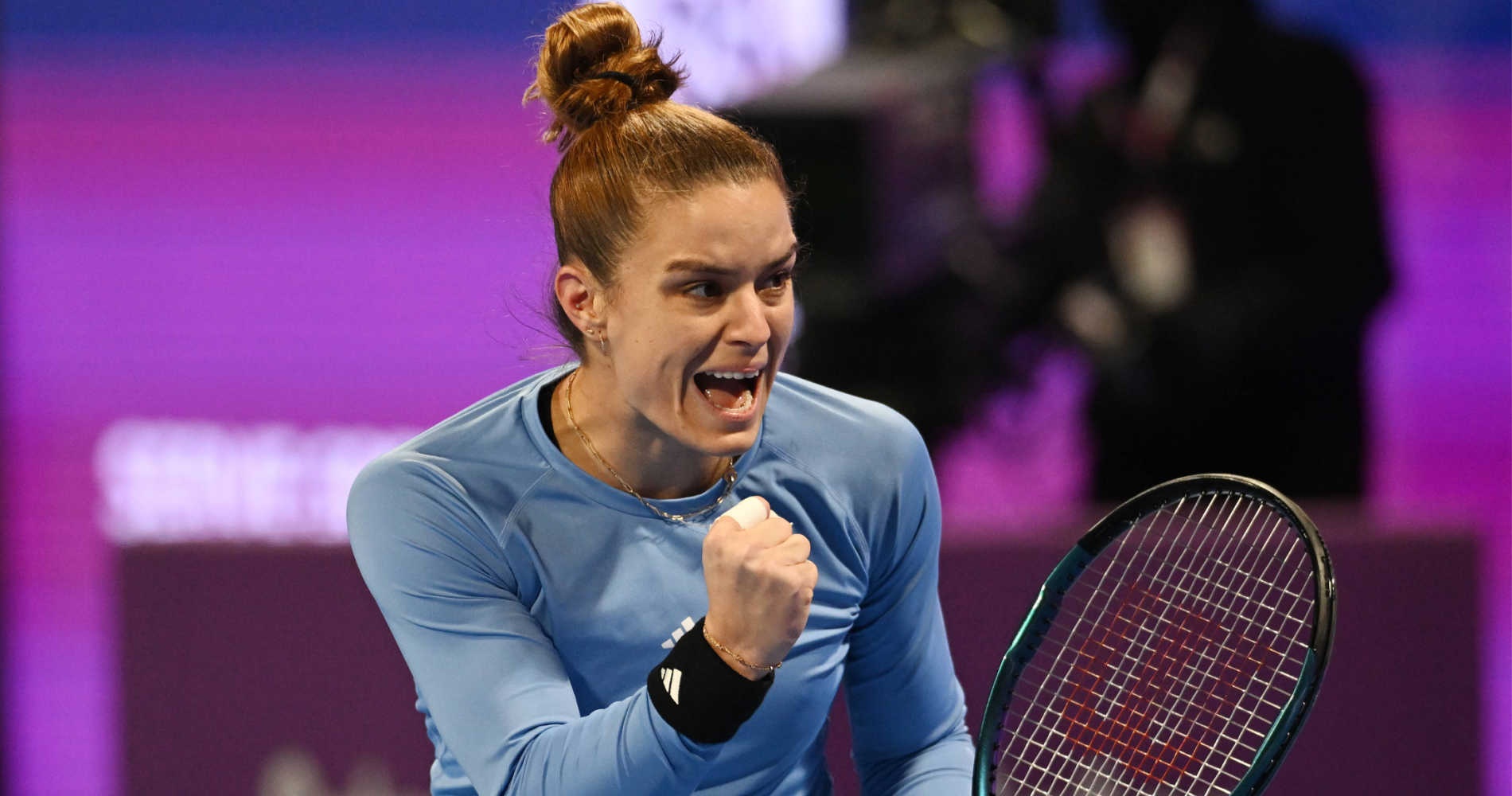
“The reason I’ve managed to get to the level I’ve been at for the last two years is because I’ve finally found my game’s identity. Nowadays, if you’re not a great athlete, if you’re not aggressive or if you’re too passive, you have no chance of keeping up with the other girls. You have to be at your best every week, so you have to be at your best physically but also be a consistently aggressive player. You look at the top 10 and it’s clear that all the girls are aggressive players. You have to do the same, no choice. But obviously as the season goes on there are times when it’s going to be hard to stay on track.”
“If you not aggressive, you have no chance” – Sakkari
After all, if you look at the top, Iga Swiatek became the boss of the circuit when she decided to raise her level of risk-taking even more. Of course, when you have the Pole’s forehand slap, it makes life easier on the court. In Miami last year, she spoke about this adjustment in the identity of her game.
“Before, I didn’t want to take the risk, because I didn’t want to be that type of player who just hits every ball with everyone around waiting to see if it’s going to stay in the court. I always wanted to be a solid player, with an earthy game and a lot of lift and staying in the court. But nowadays tennis is getting faster and faster, and the players who take risks, who attack, are the ones who win. I wanted to learn to do that too and my coach told me I had the ability. Suddenly I realised that I could indeed win points more easily, shorten the exchanges. I’m delighted to have found this efficiency.”
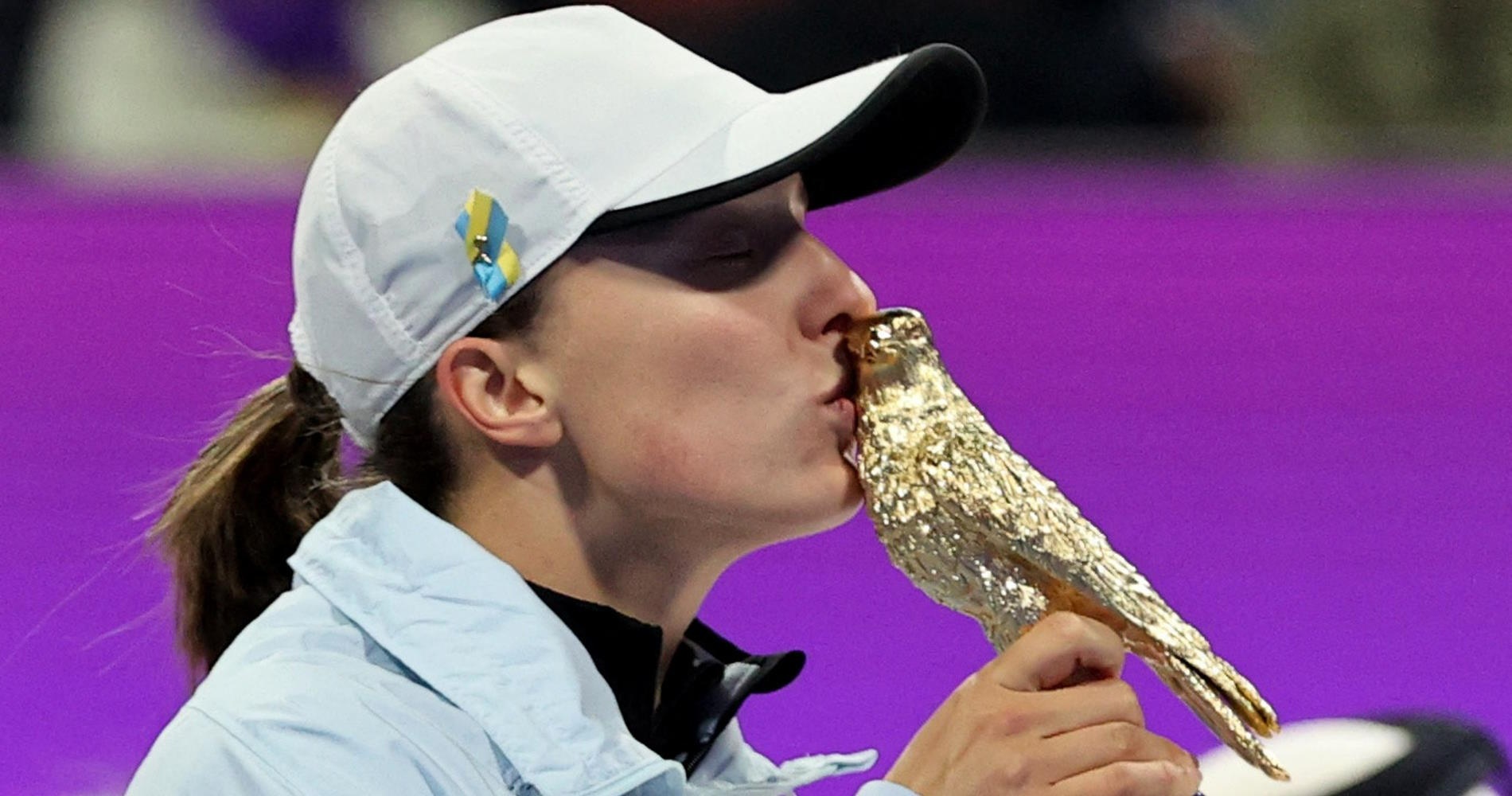
At 29, some may find it strange that Caroline Garcia still needs to be convinced or reassured about the identity of her game. But she has undoubtedly always known that her way to the top was to assume she was an attacker. An attacker on everything. An attacker even when it doesn’t seem reasonable. Winning by defending will not work for her: not because she doesn’t have the ability to do so in her game or in her legs, but because it is not in her nature and, above all, it requires a coolness and an absolute mastery of pressure that the Frenchwoman does not have. “I really learned what suits me, what style of play I want to play and where I want to go. At least I know what kind of game I want to play,” she said of the progress made since the end of last season.
We are not talking about a style of play like Jelena Ostapenko, who does not have the footwork to engage in long rallies, who has no patience anyway, who takes no pleasure in playing safely and who above all has such natural power that she cannot resist it. From this undoubtedly also come the questions asked around Garcia whose ultra-complete game could have given her other options. Garcia has obviously listened over the years to those who advised her to take fewer risks, to dose her aggression, to accept to back off when necessary. She probably also felt guilty about it.
Her father, Louis-Paul Garcia, has never wavered from his belief that his daughter must play total attack, take all the initiative herself and move forward or she will never win the biggest titles. Coaches have come and gone, but the paternal line has remained. Bertrand Perret, Garcia’s coach last season, has found a way to anchor these convictions in the Frenchwoman’s game so that she is fully convinced once and for all. And that when the ship rocks, she has the tools to stabilise it.
Garcia found them in Lyon and kept them in Doha, but the frequency still sizzles and the release is not complete. The Frenchwoman, and it must still be mentally exhausting at times, continues to spend a lot of time in her career putting the pieces of the same puzzle together again and again. In 2023 she is still chasing the release that is essential to her chosen game, and in 2023 she is still trying to figure out how to get rid of the outside pressure.
The departure of Perret, the expectations of the people, the expectations of the sponsors, the status of favourite: all of this has taken its toll on her winter. “I’m trying to deal with everything that’s going on around me, to concentrate on my tennis. The off-season is very short, there’s not much time to get back into it and when you do, you start with a very important tournament. You think you have to be on your toes and play like you did last year even though you’ve played two matches, so you can’t have the same rhythm. You have the Grand Slam coming up, so you have to say ‘OK guys, but leave me alone for a second’ (she laughs). It’s good pressure, but you feel like everything is going so fast that you can’t even think’.
“I try to deal with everything that’s going on around me, to focus on my tennis” – Garcia
With a game that is all about high-flying, it’s impossible to perform if your head is not clear. Iga Swiatek explained that she lowered her expectations after the Australian Open in order to regain her composure: “I needed a reset, to expect less of myself, to stop thinking that I had to play perfectly all the time, to tell myself that if a practice went wrong it was the end of everything. Last season had messed up my brain a bit. I accept the fact that this stress will come back but I focus on what I have to do on the court, on other things than tennis, on what makes me happy. I have to stop analysing everything and remember that I need to feel free on the court.”
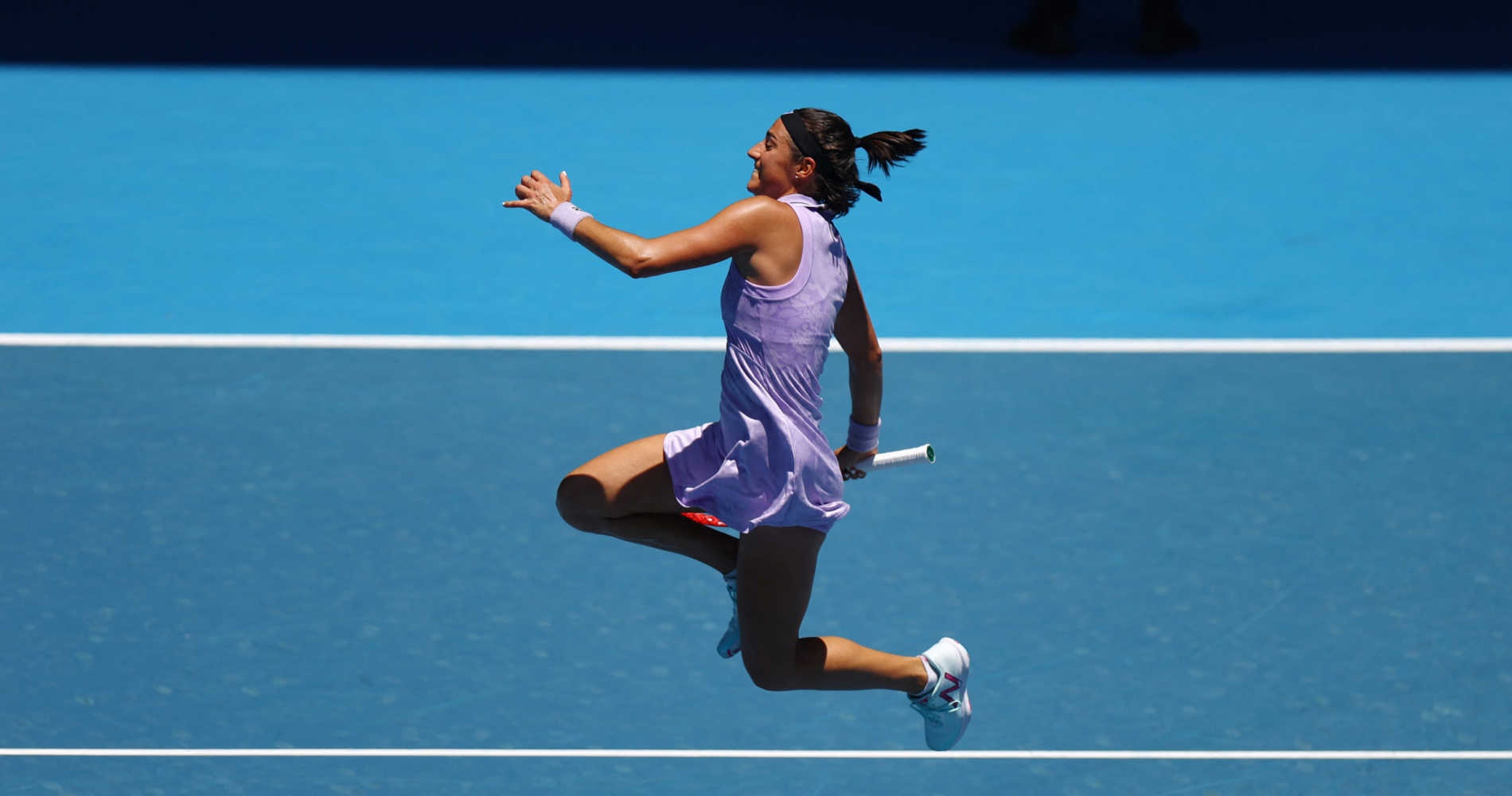
Garcia is obviously no Swiatek, but there are definitely avenues to explore for the Frenchwoman in the Polish woman’s game and approach. Between hyper-sensitive players, we must recognise each other. One would even be tempted to push the idea of inspiration into the game. This total tennis imposed by Swiatek at the moment is somehow the ideal that Garcia is unable to realise. She is also naturally forward-moving, she has the power, a great serve, the ultra-early ball handling but also the physical qualities to keep both feet on the baseline. No, she doesn’t have the huge forehand lift and perhaps not the immense – and underestimated – intelligence of the Polish player. But is the DNA of their game that different? When you see Garcia at the end of last season, what does she have less than Iga in the identity of this game that wins everything?
Swiatek inspiration, a combination of risk and control?
It probably comes back to the approach. When Swiatek is asked how she came to terms with becoming a much more risk-taking player, she immediately rests the backbone of her game, the one she refused to change and which is firmly embedded right down to those neurons. “I will always be the type of player who needs to feel in control. I don’t want to go for power at all costs, I want to remain a solid player. So even though I’m playing a lot faster now, I’m still a player who is based on solidity in the exchange. I’m always trying to keep that balance.
Swiatek actually chose…not to choose. The Pole and her team decided to take the best of both worlds. It was probably an easier choice for her, as the ultra-solid base of her game had been cemented. You can take risks on a game whose identity is sealed and whose volume is ultra complete. You can also come back to it on days when the risk derails, when ideas are not clear. Garcia, instead, is trying to do what no one has managed to accomplish in women’s Grand Slam tennis recently, not since Ostapenko at Roland-Garros in 2017, in the vein of a Petra Kvitova at Wimbledon: to turn her racquet into a torch to the trophy, without doubting, without backing down, trying everything and all the time, electrifying the crowds in the process. That is the nature of the feat required of Garcia and, if she succeeds just once, huge hats off to her.
This requires a total absence of stress. It also implies a very particular definition of an aggressive game, which here becomes a game on the edge, which seeks to stun in a few shots, which seeks the lines, which smashes the angles. Garcia is not the kind of player who utilises another form of aggressive play, where it is the constancy of the aggression which suffocates the opponent and it is perhaps where her cursor could evolve in 2023. And consequently make it easier to live with pressure. An aggressive game, a game that puts pressure on, is not always a game that tries everything all the time, it is also a game that suffocates by the constancy of the pressure imposed. A game that blows the opponent away because the pressure never stops. Victoria Azarenka is no less aggressive than Iga Swiatek, but it is not the same aggression.

Aryna Sabalenka, who has spent years of Grand Slam heartbreak trying to do what Garcia is trying to do, finally put a little bit of control in her sea of risk. That’s when she calmed her nerves too. And so she won the Australian Open. Garcia is no less of a tennis player than Sabalenka, quite the contrary. The Frenchwoman has the game to go for the big titles, she knows it perfectly well and that is perhaps what is playing with her head once again in 2023. She wants to make this season HER season: that’s what’s at stake at the beginning of the year in the form of a launch pad. But Garcia cannot tame this game she has chosen, against all odds, without a cool head. This is the story of her career. This season she has to complete the damn puzzle again, but this time with a super glue finish.
